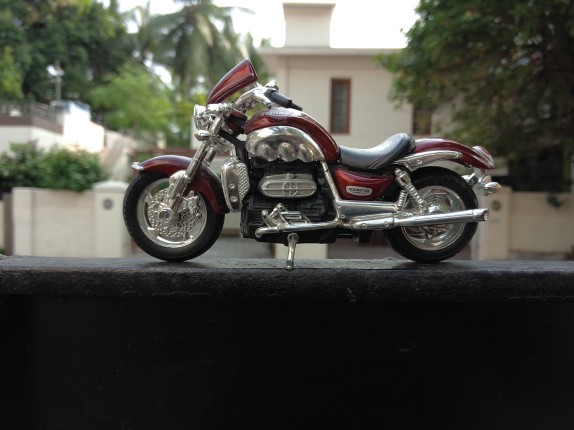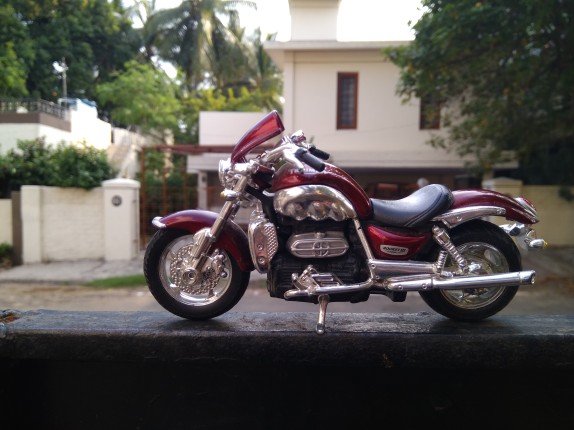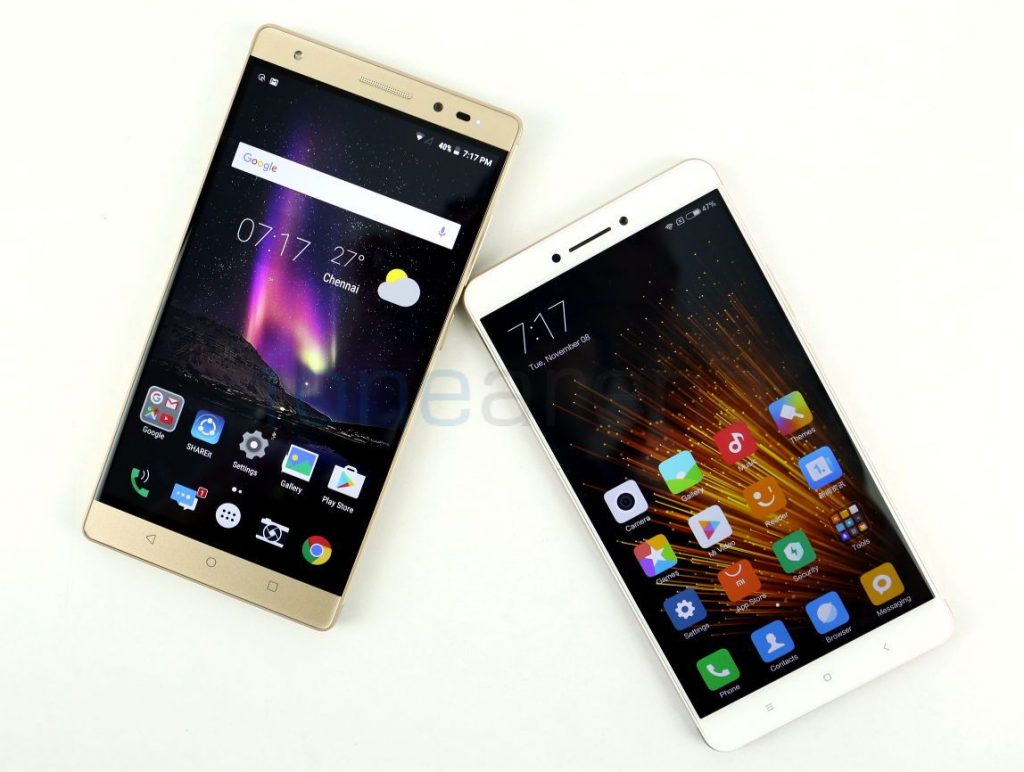
Chinese handset makers are reshaping the smartphone market, as the phablets which were quite a distinctive one before, are now growing immensely popular especially in the Indian market. Over the years, we have seen smartphones getting bigger in size with a palm-filling phablet concepts. Love ’em or hate ’em, phablets are here to stay.
This week Lenovo launched the Phab 2 Plus smartphone, the successor of the last years Phab Plus at a price of Rs. 14,999 exclusively on Amazon.in.
Lenovo Phab 2 Plus has dual 13-megapixel rear cameras, which comes with an augmented reality mode to let users create photos and videos with superimposed effects such as virtual backgrounds or cartoons.
On the other hand, Xiaomi had launched it’s very first phablet dubbed as Mi Max with just 7.5mm thickness at a same price of Rs. 14,999 on Amazon.in and Mi.com in June. Last month it launched a more powerful Xiaomi Mi Max Prime with Snapdragon 652 and 4GB RAM for Rs. 19,999. But when there are two of them in a similar range, one cannot help but compare to see which is the better 6.4-inch phablet. Xiaomi Mi Max or Lenovo Phab 2 Plus. Let’s see.
Design

The Lenovo Phab 2 Plus comes with aluminum alloy body with a 2.5D glass on the front. Mi Max also comes with an all metal body with chamfered edges and matte finish on the back.
While the Lenovo Phab 2 Plus measures 9.6mm in thickness and weigh around 218 grams, the Mi Max is just 7.5mm thick with 203 grams in weight. Both the phones have a hybrid dual SIM slot that lets you use the second SIM as an expansion slot. Speakers and micro USB slot are present on the bottom on both the phones.
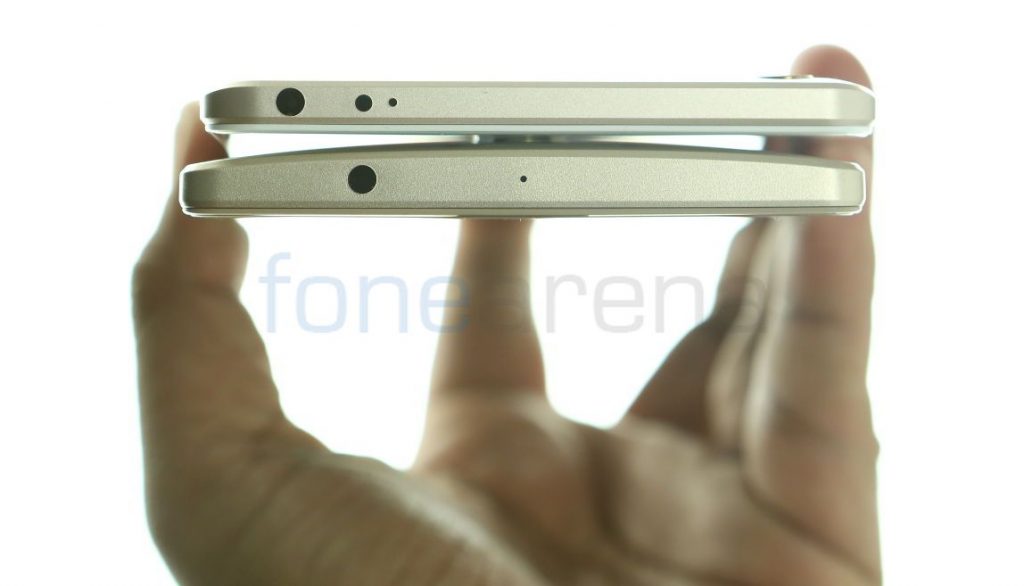
3.5mm audio jack and secondary microphone are present on the top for both. The Mi Max also has an infrared sensor on the top for remote control support, which the Phab 2 Plus lacks.
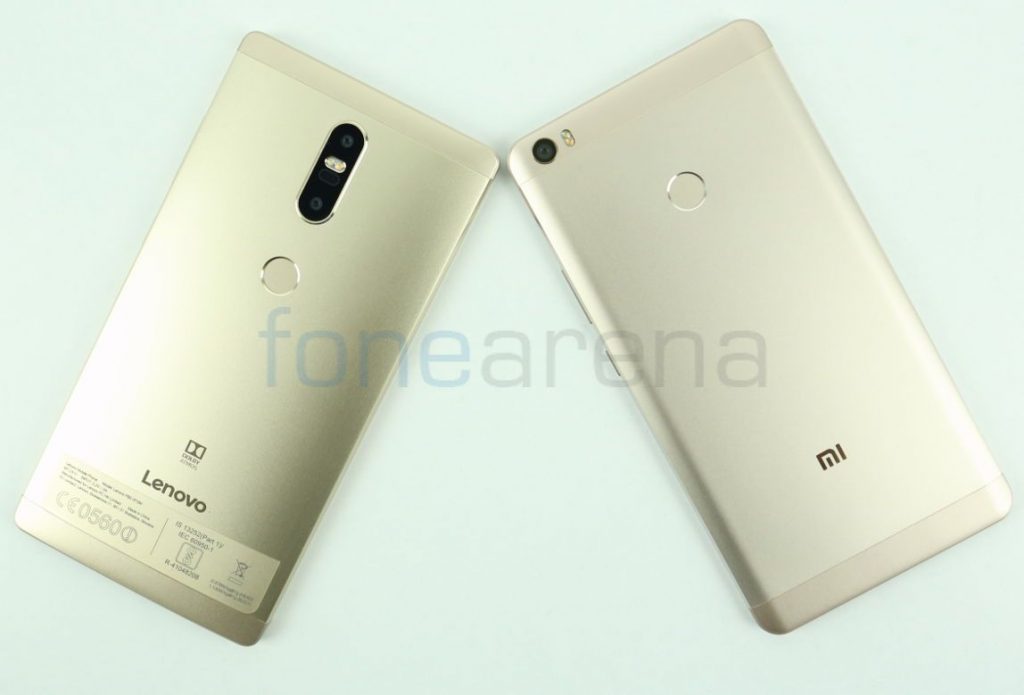
Both the smartphone feature an “always listening” fingerprint sensor on the back, just below the camera module that lets you add up to 5 fingerprints.
We also did a fingerprint recognition speed comparison between Xiaomi Mi Max and Lenovo Phab 2 Plus and found out that the former (Mi Max) is significantly faster than the latter (Phab 2 Plus).
Display

When it comes to the phablet, the display is what makes all the differences! The Lenovo Phab 2 Plus comes with 6.4-inch 1080p Full HD display with a pixel density of 344ppi.
The Mi Max features a slightly larger screen with 6.44-inch 1080p Full HD display with a pixel density of 342ppi.
While the very slight difference in pixel density is not noticeable, the brightness, viewing angles and the sunlight readability are equally good.
Hardware

Talking about the internal hardware, the Lenovo Phab 2 Plus is powered by a Octa-Core MediaTek MT8783 chipset clocked at 1.3GHz along with Mali T720 GPU under the hood.
On the other hand, Mi Max comes with Hexa-Core Snapdragon 650 with Adreno 510 GPU for the base variant and the top-end version has an Octa Core Snapdragon 652 processor with the 4GB RAM,128GB inbuilt storage, and same GPU.
In the real world usage, both the smartphone offers lag-free experience and handles everything that you throw at with ease. Also, the phones accomplished the same without heating up too much, which is something that needs to be appreciated.
When we tested both the mobile with some heavy gaming (Asphalt Xtreme), the Phab 2 Plus faced some problems including frame drop, bad color reproduction, and some heating issues as well. While on the other side, Mi Max handled the gaming part smoothly without any lags or frame drops.
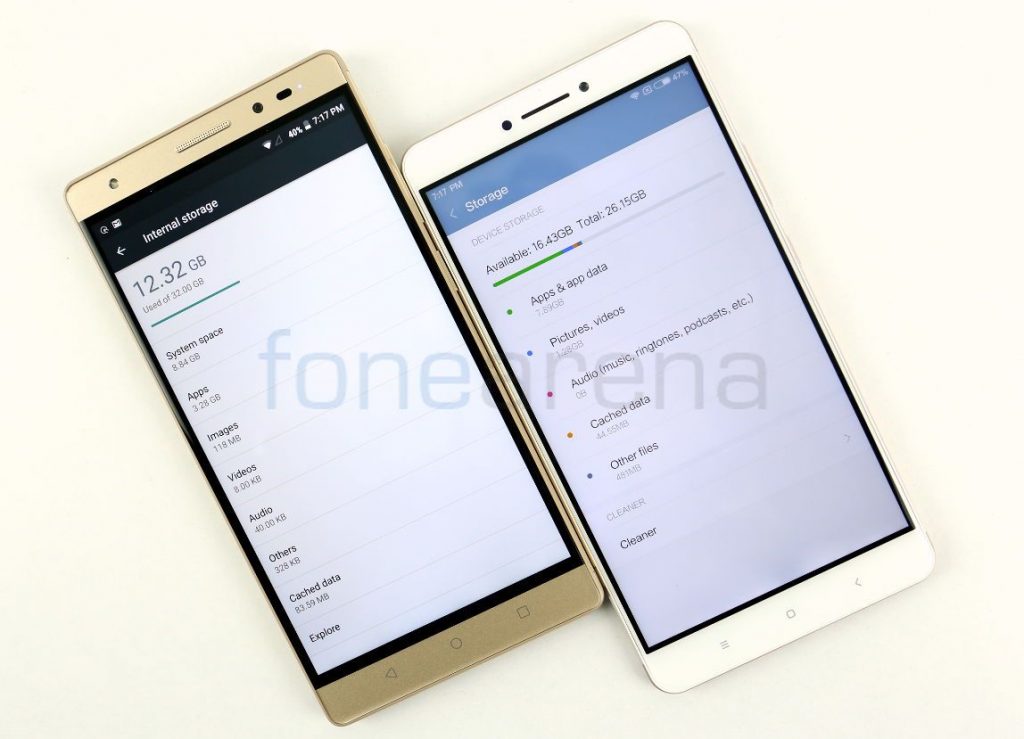
The storage is typically the same on both the smartphones with 3GB RAM and 32GB inbuilt memory as well. Out of 32GB, Phab 2 Plus offers 23.75GB and Mi Max offers 24GB. You can also expand the storage up to 128GB via MicroSD card slot.
Camera
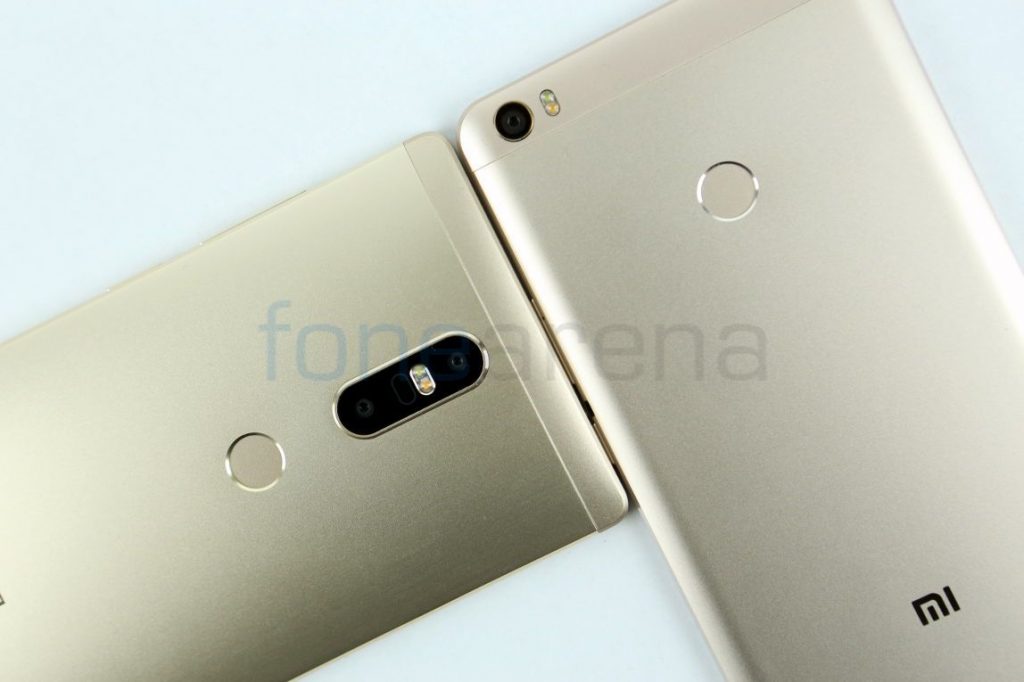
Coming to the camera, the Lenovo Phab 2 Plus comes with dual 13MP rear cameras with dual-tone LED Flash, f/2.0 aperture, laser auto focus and 8MP front camera with f/2.2 aperture and LED flash.
While the Mi Max comes with a 16MP rear camera with dual-tone LED Flash, PDAF, f/2.0 aperture and a 5MP front-facing camera with 85-degree wide-angle lens and f/2.0 aperture.
Comparing both the smartphones, the Phab 2 Plus manages to resolve quite a bit of detail despite having a lower resolution of 13 MP compared to 16 MP on the Mi Max.
Moreover, the Mi Max images produce warmer tones and are more saturated/vivid compared to the cooler tones and more natural colours of the Phab 2 Plus. This is especially noticeable in the greens which look more yellowish on the Mi Max.
The Phab 2 Plus 2nd camera allows it to capture good effects in terms depth of field. You can refocus an image after the fact and even replace the background.
Mi Max carries the yellow tone on the flash as well as the images have a yellow hue. The Phab 2 Plus also has a dual tone flash but seems more natural as well as more powerful and evenly lit.
Mi Max videos carry plenty of detail at the safe of extra noise. Phab 2 Plus videos are softer but the focus racks much faster than the Mi Max which hunts and takes quite long to lock focus.
Check out some samples (Click the image for full-resolution sample). The one on the left is the Phab 2 Plus and the right image is taken on Mi Max.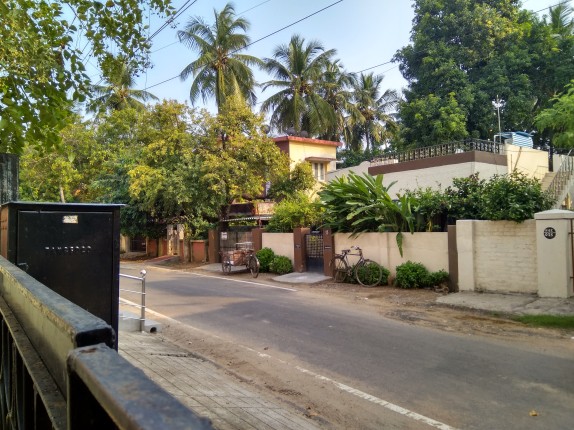

Software

Moving on to the software, both the smartphone run Android 6.0 Marshmallow with their own custom UI on top. The Mi Max comes with MIUI 8, while the Phab 2 Plus runs on Vibe UI. Comparatively, the MIUI is much more customizable and easier to use that the Vibe UI.
In an attempt to make it easier to use, the Mi Max comes with ‘One handed mode’, which shrinks the content on the display down to 4.5, 4.0 and 3.5-inch to any one of the bottom corners. Just swipe the home button and back button to display the shrunken content on to right and swipe the home button and menu button to display the content on left.
Moreover, it also comes with shortcut menu called as ‘Quick Ball’ similar to Apple’s Assistive touch. This Quick Ball lets you add up 5 different options, which can be placed anywhere on the edge of the display. Also, it comes pre-installed with native apps that can clean junk, scan virus and much more. You will get access to various themes and wallpapers from the collection, Mi Remote that lets you control infra-red appliances in your home.
On the other hand , the Vibe UI do comes with features, but not as generous as the MIUI 8. The Phab 2 Plus has comes with a floating control just like Xiaomi’s Quick Ball, that lets you create floating bar for accessing utility apps like camera, music, calculator and more.
You can also enable the ‘Double-Tap to Wake up’ from the settings to enable double tap to wake the screen up when it’s locked. Smart Reduce feature automatically reduces the ringtone volume when picked up, while the Smart Answer automatically answers a call when bringing your phone to your ear.
At the end, the UI preference really comes down to personal choice. Personally, I think MIUI is the one that is easy to use and also has lots of options to customizations under the sleeve.
Battery
Moving on to the battery, the Mi Max comes powered by a humongous 4850mAh battery, while the Phab 2 Plus 4050mAh battery. It’s worth mentioning that both the smartphones lack quick charging technology officially. On the connectivity front both the Mi Max and Phab 2 Plus support 4G VoLTE, dual-band Wi-Fi 802.11ac, Bluetooth, GPS and much more. In our battery test, Xiaomi Mi Max achieved a One Charge Rating of 19 hours and 57 minutes. We will be adding battery test comparison between both once we are done with the tests for Phab 2 Plus.
Verdict
Overall, the Phab 2 Plus stands out when it comes to dual camera setup and build quality, while the Xiaomi has a slight edge when it comes to performance, software and also comes in two variants.




